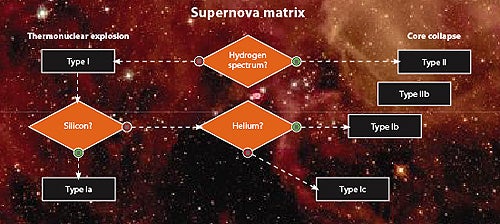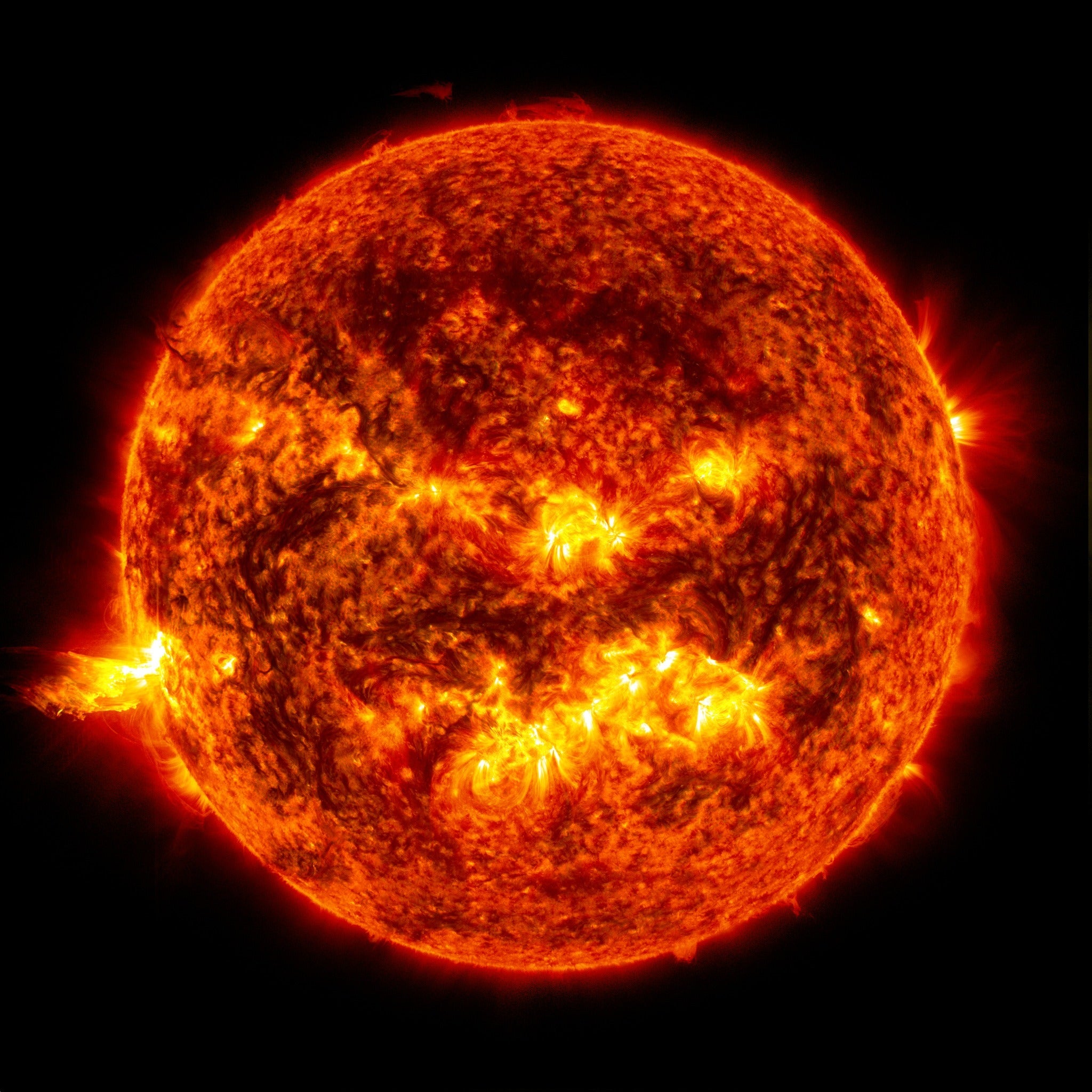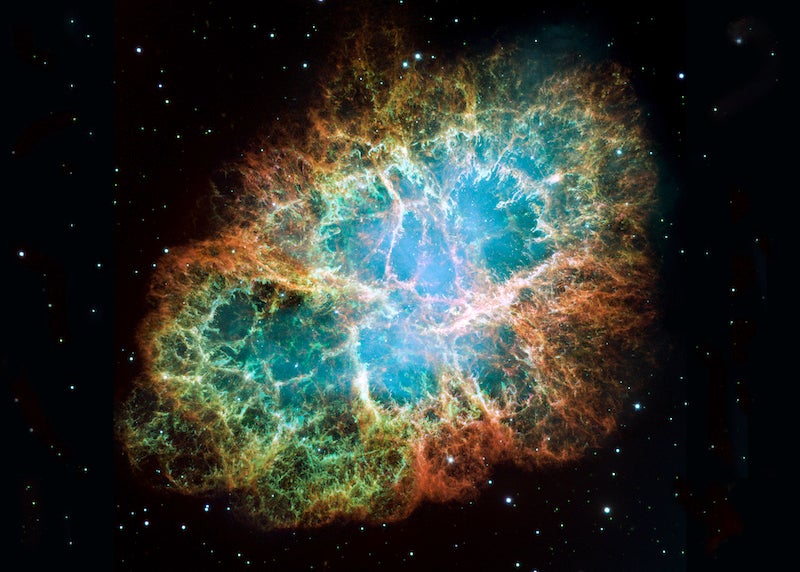The maximum brightnesses of type Ia supernovae vary little, a feature that makes them important “standard candles” that help astronomers determine distances to other galaxies. Spectra show these exploding stars contain no hydrogen; but at peak brightness calcium, oxygen, and silicon lines appear. Type Ia supernovae are found in all types of galaxies. A recent example is SN 2005as in NGC 3450.
Supernovae of type Ib and Ic display apparent energies 10 or more times greater than other supernovae. Found only in spiral galaxies, Type Ib and Ic supernovae are thought to be associated with massive stars that have lost their hydrogen envelopes either by strong stellar winds (as in Wolf-Rayet stars) or through mass loss to a binary companion.
Neither class shows spectral hydrogen or silicon lines. The presence of helium lines distinguishes type Ib.
Light from type Ib and Ic supernovae is highly polarized, implying these stars explode in some preferred direction. The remnants of some supernovae, such as Cassiopeia A and SN 1987A, hint that the explosion process can involve twin jets of material shot out along the star’s spin axis.
This “beaming” explains why these supernova classes appear much more energetic than all other types – so much so that some astronomers dubbed them “hypernovae.” If the star’s axis tips toward Earth, astronomers record rapid expansion speeds from the small amount of matter ejected in the jets. When astronomers account for the jets’ beaming effect, the apparent extraordinary energy of these supernovae disappears.
Type Ib/c events are linked with gamma-ray bursts (GRBs) longer than 2 seconds, although it remains unclear whether other supernova types are also capable of producing a GRB. Famous examples include SN 1998bw (associated with GRB 980425) and SN 2003dh (linked with GRB 030329).
It was 1941 when astronomers first recognized not all supernovae are alike. German astrophysicist Rudolph Minkowski proposed a simple two-level scheme based on the absence (type I) or presence (type II) of strong hydrogen spectral lines when a supernova reaches peak brightness.
Type II events occur in massive stars that are surrounded by thick, massive hydrogen atmospheres.
One variant, type IIb, shows prominent hydrogen lines right after the explosion, but the spectrum later morphs into something that looks more like it came from a type Ib or Ic supernova. Astronomers think these events bridge the gap between supernovae from stars that have kept massive hydrogen atmospheres and type Ib/c events, which come from stars that have lost these envelopes completely. — FRANCIS REDDY, ASSOCIATE EDITOR










